The multicolours synonymous with Mexico burst forth at Gardens by the Bay with a vibrant floral display that showcases rarely-seen elements of Mexican culture in Singapore
 (From left) The Ambassador of Mexico to Singapore His Excellency Agustin García-López Loaeza, Gardens by the Bay CEO Felix Loh, floral arch master artisan Mario Arturo Aguilar Gutierrez (in white shirt) and Senior Minister of State, Ministry of Foreign Affairs and Ministry of National Development Sim Ann at the launch of the Hanging Gardens – Mexican Roots floral display in Flower Dome.
(From left) The Ambassador of Mexico to Singapore His Excellency Agustin García-López Loaeza, Gardens by the Bay CEO Felix Loh, floral arch master artisan Mario Arturo Aguilar Gutierrez (in white shirt) and Senior Minister of State, Ministry of Foreign Affairs and Ministry of National Development Sim Ann at the launch of the Hanging Gardens – Mexican Roots floral display in Flower Dome.
An 18m-long double-headed serpent – one of the most famous symbols of the Aztecs – composed of 3,000 tillandsias, and a 4.5m-tall reproduction of the iconic Chichén Itzá pyramid of the Mayans are some of the aspects of Mexican culture visitors will get to see in the Hanging Gardens – Mexican Roots floral display.
Gardens by the Bay‘s newest floral display, which also brings forth the multi-colours synonymous with Mexico, is a collaboration with the Embassy of Mexico in Singapore and supported by Bloomberg. Senior Minister of State, Ministry of Foreign Affairs and Ministry of National Development Sim Ann launched the floral display today, which opens to the public on 20 August 2022.
Paying tribute to the contributions of Mexico’s ancient civilisations
Food plants native to Mexico like tomatoes, chillies and corn – some varieties which are rarely seen in this part of the world – are showcased in the floral display. In fact, heirloom varieties of Mexican corn are one of the highlights. Multi-coloured and bearing little resemblance to the yellow version most of us are familiar with, these heirloom varieties have been specially brought in from Mexico, and their ancestry can be traced back to thousands of years ago. After all, the ancient civilisations of Mexico were responsible for domesticating corn across thousands of years into a food plant.
Gardens by the Bay CEO Felix Loh said, “As much as the Hanging Gardens – Mexican Roots floral display is a showcase of the richness and vibrancy of Mexican culture, it is also a tribute to one of the most important contributions to agronomy in history, made by the ancient civilisations of Mexico. The ancestors of the Mexicans were truly ingenious, because even without modern technology, they invented cross-breeding techniques that resulted in the domestication of modern corn that feeds the world today. We hope to share this knowledge with our visitors through a display focusing on plant heritage and culture.”
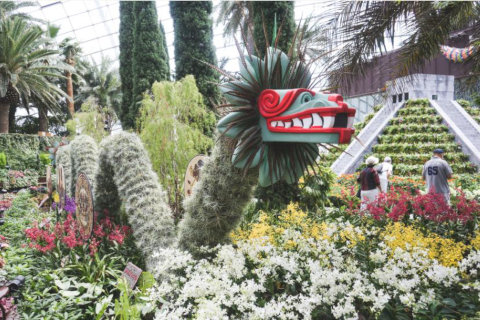 Image credit: Gardens by the Bay
Image credit: Gardens by the Bay
The Ambassador of Mexico to Singapore, His Excellency Agustin García-López Loaeza said, “The botanical and cultural exhibition Hanging Gardens – Mexican Roots is an enormous cooperation effort between Gardens by the Bay and the Embassy of Mexico, and the Mexican community led by La Jacaranda, coordinated extraordinarily by Mrs Lidia Riveros, showcasing Mexican cultural and botanical heritage and long-standing historical and cultural linkages among our countries and regions. Prime Minister Lee Hsien Loong’s official visit to Mexico in 2019 gave a major boost to bilateral relations on all fronts, especially in the economic, educational, scientific and cultural fields. The exhibition showcases keystone elements of Mexican culture, tracing back to our roots in the ancient Mesoamerican world, one of the six cradle civilisations in humanity’s history. The legacy of the Mesoamerican world not only entails their magnificent architecture and cities, art, languages, scientific and astronomic advances, among others, but also their great agricultural knowledge, and techniques and products, which the entire world continues to benefit from in the present.”
Plants commonly seen in Mexico, such as orchids, dahlias and bromeliads will also be part of the landscape.
A glimpse into the long and rich history of Mexico
Hanging Gardens – Mexican Roots will also be an eye-opening peek into the long and rich history of Mexico, through a showcase of some of the most well-known icons of Mesoamerican civilisations, or the indigenous cultures of the region before the arrival of the Spanish. There will be reproductions of:
- A colossal Olmec head, of which there are 17 in the archaeological sites of La Venta and San Lorenzo in Mexico, that are believed to represent great rulers of the Olmec civilisation
- The giants of the Temple of the Morning Star in the ancient city of Tula in present-day Hidalgo, Mexico, who are said to be warriors of the Toltec civilisation
- The head of Quetzalcóatl, the feathered serpent god of the Teotihuacan civilisation
- A Chac Mool, or a sculpture of a reclining male balancing a bowl on his belly, which is associated with the Mayans
Celebrating Mexican folk art and culture
Mexican folk art is also a highlight of the floral display, for example the seven seed mosaic art medallions handmade by the Mexican community in Singapore. Seed mosaic art is a folk art where seeds, beans and pulses are used to create images. Occasionally, feathers are also used.
Another example of Mexican folk art is a festive floral arch measuring 8m across and 5m in height that greets visitors when they enter Flower Dome. The floral arch is handcrafted by Mario Arturo Aguilar Gutierrez, a third-generation master of this traditional artform. Together with two assistants, he was brought to Singapore by the Mexican Embassy to work on the floral arch on site at Gardens by the Bay.
The public can also look forward to a Mexican film festival, culinary demonstrations by Latin chefs, as well as Mexican cultural performances at Gardens by the Bay, which are curated by the Mexican Embassy. There will also be craft activities held in collaboration with the Mexican Association in Singapore. Visit here for details.
Hanging Gardens – Mexican Roots
Date: 20 August to 25 September 2022
Time: 9am to 9pm
Details: Admission charge to Flower Dome applies
You can get tickets online via Klook.
CULTURAL ELEMENTS OF THE HANGING GARDENS: MEXICAN ROOTS FLORAL DISPLAY
CORN
Beyond just being a staple crop, corn has deep meaning in Mexican culture. When corn was first domesticated is still being argued, but it is indisputable that corn was first domesticated in Mexico between 8,500 to 10,000 years ago. To Mexicans, corn represents life, and its harvest cycle is closely tied to the cycle of life.
The ancestor of corn is teosinthe, a grass-like plant with a hard shell surrounding its grain. Protected by its hard shell, teosinte is not commonly consumed although it is widely used as a forage crop for cattle. The stalk can be chewed to extract its sweet juice. The hard shell of the teosinte disappeared when a genetic mutation occurred, and the ancient civilisations of Mexico took advantage of this trait to domesticate it for its grain, developing it over the years to the corn that we are familiar with today.
MEXICAN FOLK ART
Seed mosaics
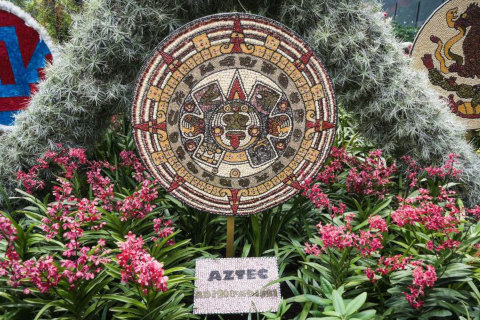 Image credit: Gardens by the Bay
Image credit: Gardens by the Bay
Seed mosaics are a traditional Mexican art form often seen during harvest festivals and ceremonies. Seeds, beans or pulses of various sizes and colours are used to create intricate images on streets and pavements.
The beauty of the mosaic is not only in its design, but also in its transience. As the seeds, beans and pulses are often loosely laid out, these mosaics are not intended to last. In Mexican culture, this is an analogy for the fleetingness of life, and how one must enjoy the moment.
Seeds, beans and pulses from Mexico are used for the seven seed mosaic art medallions in the Hanging Gardens – Mexican Roots floral display.
Floral arch
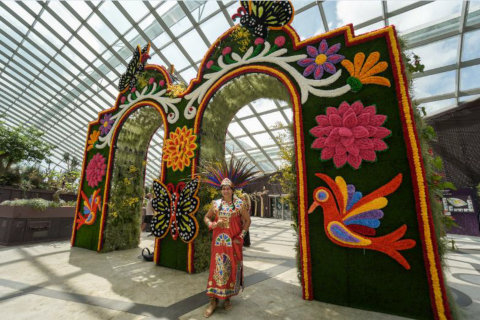 Image credit: Gardens by the Bay
Image credit: Gardens by the Bay
The elaborate floral arch is often erected at the entrances of Mexican towns, churches and even weddings. To welcome visitors to the Hanging Gardens – Mexican Roots floral display, a festive floral arch measuring 8m across and 5m in height sits at the entrance of Flower Dome.
This floral arch is the work of third-generation artisan Mario Arturo Aguilar Gutierrez. Along with two assistants, they have travelled to Singapore from the town of Iztacalco in Mexico City to build the floral arch on-site at Gardens by the Bay.
Flowers are ever-present in the daily life of Mexicans from the earliest indigenous communities; from birth, in their celebrations, and even in death. This significance of flowers can be traced back to the agriculture practiced in the chinampas (floating gardens) located in the Valley of Mexico (also known as the Valley of Anahuac, an Aztec word), where natives planted both corn and flowers before the arrival of the Spaniards.
Floral arches that decorate entrances indicate the place is dressed for a festival. These floral arches, which symbolise gratitude and devotion, are also made by the residents of villages as an offering to the patron saints. This traditional folk art is a manifestation of the syncretism of ancient ways of celebrating the deities within the Catholic calendar.
In some villages, the floral arch can also be made of fresh seasonal fruit, seeds, and sweets to indicate that it is a fiesta. The vivid colours of the floral arch are an example of the use of multicolours that can be found in any expression of Mexican folk art, and in every corner of Mexico’s vast territory.
The floral arch in Flower Dome, includes in its design hummingbirds and butterflies, which are biodiversity of particular importance to Mexicans, not only because they are common in Mexico, but because they are pollinators of flowers and plants – a fundamental element of the creation of new life.
ICONS OF MEXICO’S ANCIENT CIVILISATIONS
Chac Mool
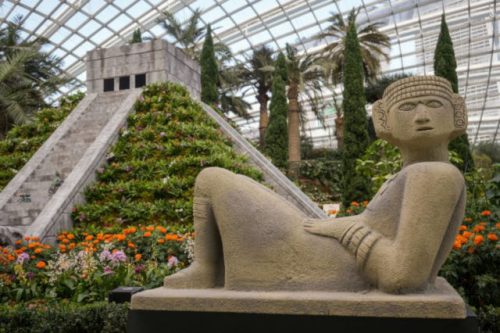 Image credit: Gardens by the Bay
Image credit: Gardens by the Bay
Chac Mool is a distinct form of a Mesoamerican statue of a reclining figure, often on a rectangular base. Its head faces 90 degrees to the left or right from the front, its body is supported with bent knees and elbows, and its arm is holding on to a bowl at the torso or belly. The bowl serves as a vessel for sacrificial offerings ranging from tamales and tortillas to tobacco, flowers and colourful feathers. Several Chac Mool were found in different excavations in and around Mexico City and important archaeological sites at Tula and Chichén Itzá.
Chichén Itzá
Located in the eastern part of the Yucatán state in Mexico, the city of Chichén Itzá boasts a wealth of dense architecture, reminiscent of its reputation as a significant regional capital in the North Maya Lowlands during the Late Classic Period (c. AD 600 – AD 900) to the Terminal Classic Period (c. AD 800 – AD 900).
Its prime location allowed for economic opportunities in the lucrative trade route and the surrounding cenotes (natural sinkholes), which contained water all year round, made it attractive for settlements. In modern times, it is one of the most visited archaeological sites in Mexico and has gone through extensive restoration to preserve the authenticity of its architecture.
All these elements contributed to Chichén Itzá being selected as one of the New Seven Wonders of the World in 2007. Among the vast types of architecture, one of the noticeable ones is El Castillo, known as the Temple of Kukulcán, a Mesoamerican-style step-pyramid built for the deity Kukulcán, a feathered snake spirit to the Yucatán Mayans.
Double-headed serpent
The Maquizcoatl, more popularly known as the double-headed serpent, is of great mystical significance in ancient Mexico’s history. No zoological specimens of this creature have ever been recorded. In Nahuatl, the language of the Aztecs, coatl means both “serpent” and “twin”. Serpents are extensively featured in all Aztec art – it serves as an important symbol as the shedding of the serpent’s skin represents regeneration, new life and fertility.
For the 18m-long double-headed serpent in the Hanging Gardens – Mexican Roots floral display, 3,000 tillandsias have been carefully hand-tied to the frame of the serpent’s body. These epiphytic air plants native to Southwestern USA, Mexico and South America come in various shapes and sizes and are well-liked for their versatile nature, as they are also used as ornamental houseplants.
Olmec head
The artwork of the Olmec civilisation is considered the most striking in ancient America. The widely recognised Olmec heads are massive stone monuments that can be as tall as 3m, have a circumference of 4.5m and weigh up to 8 tonnes (8,000kg). Seventeen heads have been discovered in two of the most vital centres of Olmec civilisation, the archaeological sites of San Lorenzo and La Venta. The colossal head is known to be carved out of a single basalt boulder and hand sculpted using stones, while reeds and wet sand were used to achieve true-to-life and expressive facial details.
Quetzalcóatl
Quetzalcóatl is one of the most significant gods in ancient Mesoamerica, commonly present among several Mesoamerican civilisations. Its name is made up of a combination of two Nahuatl words – quetzal, meaning “emerald plumed bird”, and coatl, meaning “serpent”.
The feathered serpent of early Teotihuacán, symbolising a deity of water, fertility and agriculture, became intertwined and identified later with Quetzalcóatl, taking on the beliefs of the civilisations of Xochicalco, Tajín, Cholula, the Mayan, Toltecs and Aztecs. Quetzalcóatl was a cultural hero, a prophet, the creator of life and humankind, a wizard, the god that gave corn to people. For the Aztecs, the revered creator god is also known to bring winds and rain, which is essential for agriculture.
A carving at the archeological site of La Venta is the earliest surviving representation of Quetzalcóatl from the Olmec civilisation. More depictions are found in the six-tiered pyramid built in his honour at Teotihuacán. The feathered serpent is often represented in architectural sculptural decorations.
Tula giants
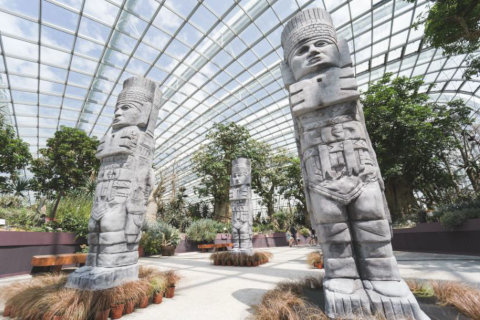
Visible on the horizon of the ancient city of Tula, Hidalgo in present-day Mexico, these large, giant statues stand atop the Temple of Tlahuizcalpantecuhtli, also known as the Temple of the Morning Star or House of the Morning Star.
Weighing several tonnes each and standing over 4.6m tall, these stone-carved statues provide valuable insight into the Toltec civilisation. Snakeskin and feathers adorn the headdresses, while butterfly-shaped breastplates, weapons and shields on the backs make up the attires carved into the statues. Modern archaeologists surmise that the statues were warriors that belong to Quetzalcóatl, the Aztec feathered serpent god, due to the feather and snakeskin decor and the butterfly breastplates.
While archaeologists are still uncertain about the exact purpose of the statues within the Mesoamerican context, they have deduced that the statues likely supported a roof at the top of the temple, like pillars or columns.
MEXICAN CULTURAL PROGRAMMES
From Mexican films, to demonstrations of Mexican cuisine by Latin chefs, to dance and music performances, celebrate the vibrant and lively culture of Mexico at Gardens by the Bay with a slew of programmes for the public in September curated by the Embassy of Mexico in Singapore.
All programmes are free, but pre-registration is required for some events. For registration details and the most updated information, visit www.gardensbythebay.com.sg/hanginggardens.
HANGING GARDENS – MEXICAN ROOTS GET CRAFTY! ACTIVITIES
In collaboration with the Mexican Association in Singapore (MEXASING), the latest series of Gardens by the Bay’s Get Crafty! activities will tie in with various elements of the Hanging Gardens – Mexican Roots floral display. These activities will be held in Flower Dome.
MEXASING is a non-profit association whose main objective is to promote Mexican traditions through events, workshops, and cultural exchanges, in support of private and government organisations such as the Mexican Embassy in Singapore.
For more information, visit here.
It’s the weekend and are you looking for things / activities to do? Check out our weekly roundup of Things to do This Weekend in Singapore.
* * * * *
Stay in touch! Subscribe to our Telegram here for our latest updates.
Like what you see here? Get parenting tips and stories straight to your inbox! Join our mailing list here.












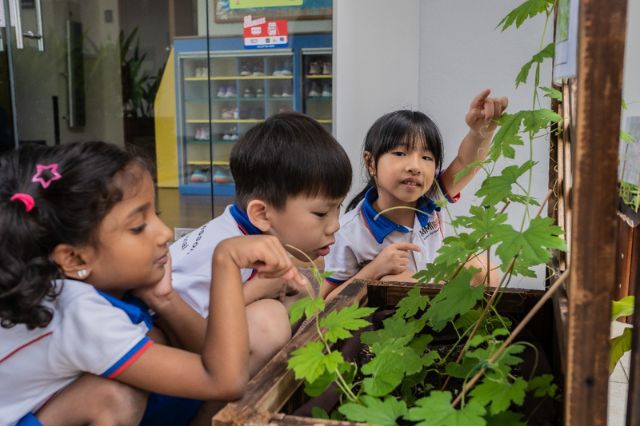



























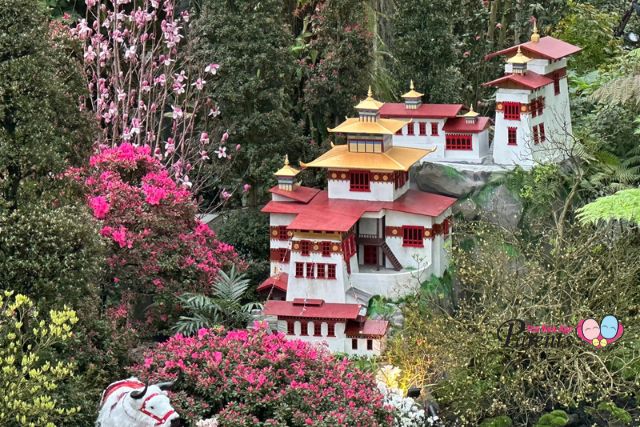

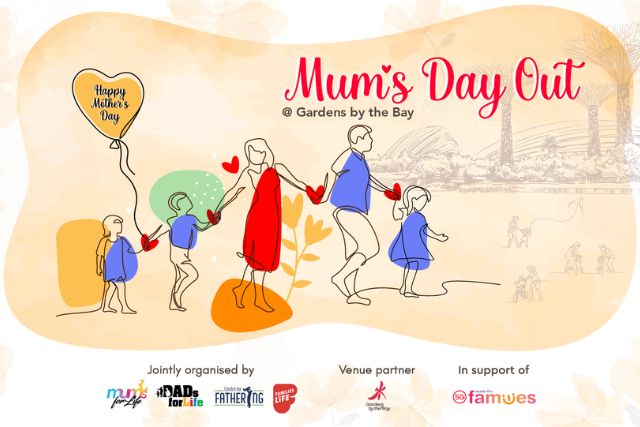
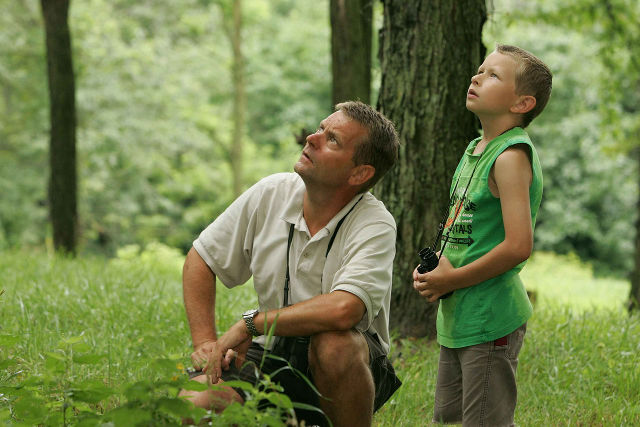






Leave a Comment: